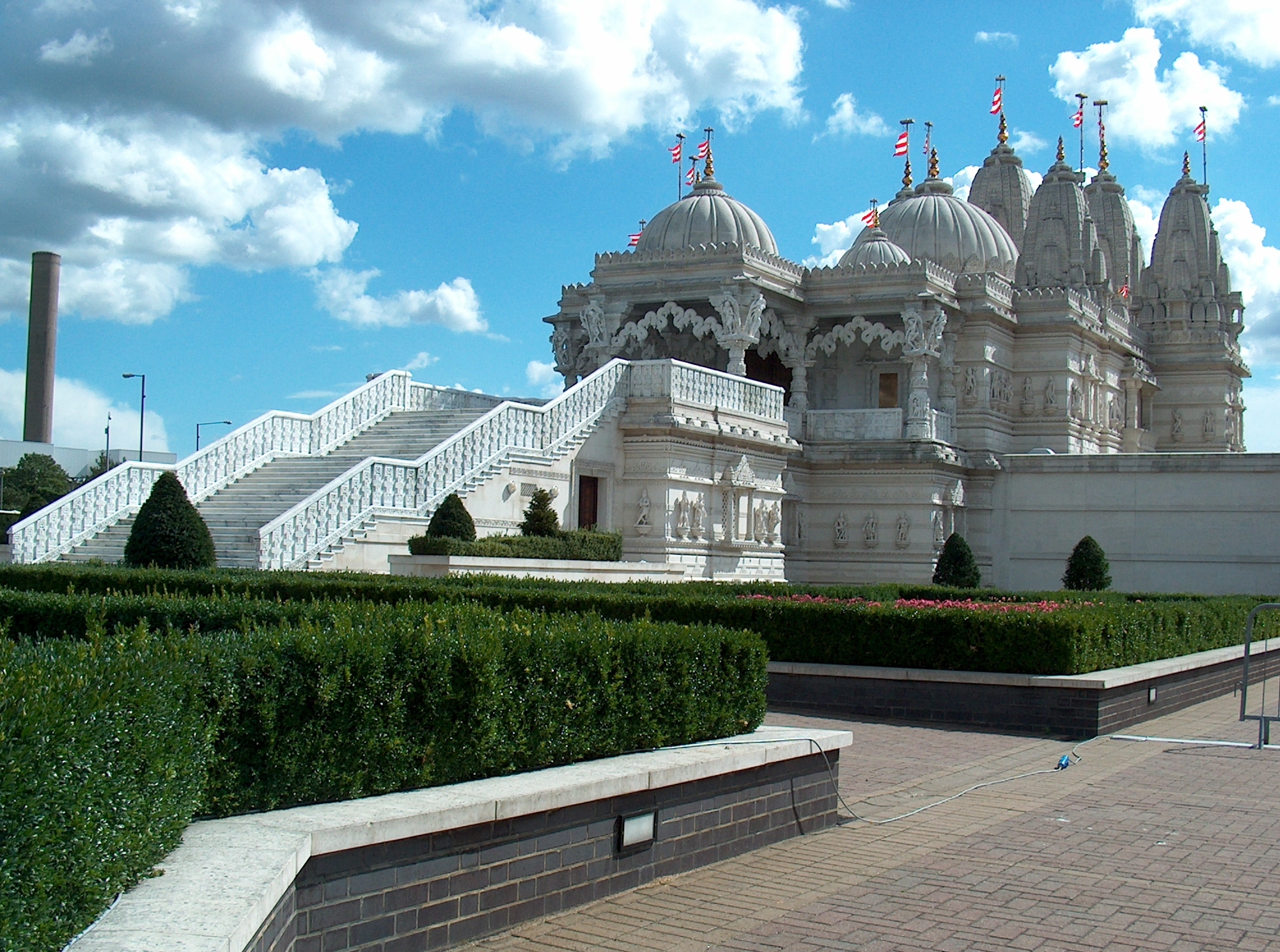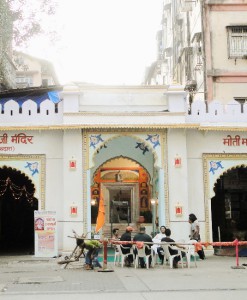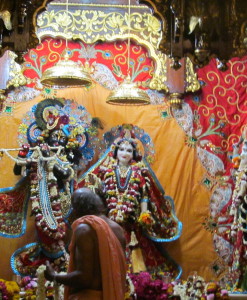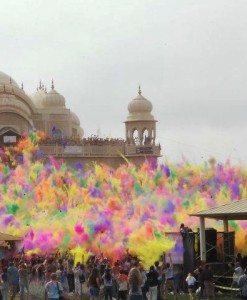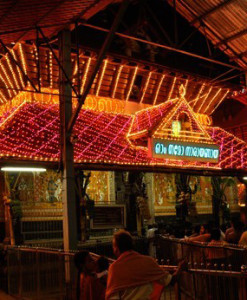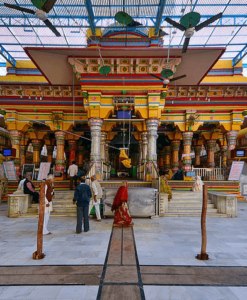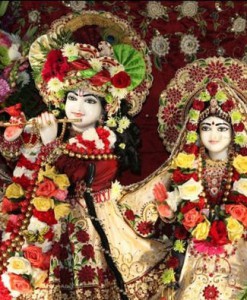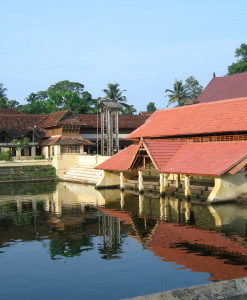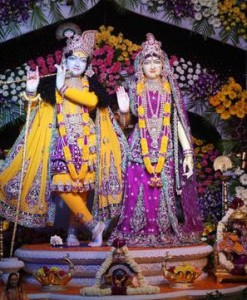No products in the cart.
BAPS Shri Swaminarayan Mandir is a masterpiece of traditional Hindu design and exquisite workmanship that rises serenely amid London’s iconic skyline. Using 5,000 tonnes of Italian Carrara and Indian Ambaji marble and the finest Bulgarian limestone, it was hand-carved in India before being assembled in London.
Biggest Hindu Temple outside India: The Shri Swaminarayan Temple in Neasden, London, UK, is the largest Hindu temple outside India. It was built by Pramukh Swami, a 92-year-old Indian sadhu (holy man), and is made of 2,828 tonnes of Bulgarian limestone and 2,000 tonnes of Italian marble, which was first shipped to India to be carved by a team of 1,526 sculptors. The temple cost £12 million to build.
BAPS Shri Swaminarayan Mandir London
June 1970: The first BAPS Swaminarayan Mandir in the UK was opened in a converted disused church in Islington, North London, by Yogiji Maharaj
• 1982: Having outgrown the temple, the congregation moved from the Islington temple to a small, former warehouse in Neasden.
• 1990: BAPS was again in search of a building that could cope with the growing congregation, and plans for the present temple were made.
• 1995: They moved to their present temple, built on the site of a disused truck warehouse opposite the previous temple. The old temple building was retained and converted into Shayona, an Indian grocery shop and vegetarian restaurant.
The Mandir and Haveli were built and funded entirely by the Hindu Community and the entire project spanned five years although the construction itself was completed in two-and-a-half years. Building work began in August 1992. On 24 November 1992, the temple recorded the biggest-ever concrete-pour in the UK, when 4,500 tons were laid in 24 hours to create a foundation mat 6 ft (1.8m) thick. The first stone was laid in June 1993; two years later, the building was complete.
The Mandir is the focal point of the complex. Designed according to the Shilpa-Shastras, a Vedic text that develops Hindu architecture to metaphorically represent the different attributes of God, it was constructed almost entirely from Indian marble, Italian marble, Sardinian granite and Bulgarian limestone. No iron or steel was used in the construction, a unique feature for a modern building in the UK.
From the conceptual design and vision of Pramukh Swami, the architect C. B. Sompura and his team created the mandirentirely from stone. It is a shikharbaddha (or pinnacled) mandir: seven tiered pinnacles topped by golden spires crowd the roofline, complemented by five ribbed domes. The temple is noted for its profusely carved cantilevered central dome, believed to be the only one in Britain that does not use steel or lead. Inside, serpentine ribbons of stone link the columns into arches, creating a sense of levitation.
Light cream Vartza limestone from Bulgaria was chosen for the exterior, and for the interior, Italian Carrara marblesupplemented by Indian Ambaji marble. The Bulgarian and Italian stone were shipped to the port of Kandla in Gujarat, where most of the carving was eventually completed, by over 1,500 craftsmen in a workshop specially set up for the project. More than 26,300 individually numbered stones pieces which were shipped back to London, and the building was assembled like a giant three-dimensional jigsaw.
The Mandir was inaugurated on 20 August 1995 by Pramukh Swami Maharaj, the spiritual leader of BAPS – the organisation behind the temple.
The entire Mandir complex represents an act of faith and collective effort. Inspired by Pramukh Swami Maharaj, more than 1,000 volunteers worked on the building, and many more contributed and solicited donations, or organised sponsored walks and other activities; children raised money by collecting aluminium cans and foil for recycling.
The Mandir serves as the centre of worship. Directly beneath each of the seven pinnacles seen from the outside is a shrine. Each of these seven shrines houses murtis(sacred images of the Deities) within altars. Each murti is revered like God in person and devoutly attended to each day by the sadhus (monks) who live in the temple ashram.
Beneath the Mandir is the permanent exhibition ‘Understanding Hinduism’. Through 3-D dioramas, paintings, tableaux and traditional craftwork, it provides an insight into the wisdom and values of Hinduism. Visitors can learn about the origin, beliefs and contribution of Hindu seers, and how this ancient religion is being practiced today through traditions such as the BAPS Swaminarayan Sampraday.
The Mandir is open to people of all faiths and none. Entrance is free, except to the ‘Understanding Hinduism’ exhibition where there is a £2 fee.
Before sunrise, the Murtis which are adorned in their night attire are woken by the sadhus and the shrine doors are opened for the Mangala Aarti, which is the first of five Aarti rituals offered during the day. Aarti is a ritual wherein a specific prayer is recited to a poetic format with music while the sadhus wave a lighted lamp in front of the murtis. The sadhus recite some shlokas (prayers), serve the deities, offer them food and bathe them, and close the shrine doors.
The shrines are opened again for the second arti (Shangar Arti). The shrines remain open from 9:00am to approximately 11:00am, when the shrines are closed and offered thal (food for lunch). At 11.45am, the shrines are opened for the midday arti (Rajbhog Arti), and the thal (offering hymn) is recited before the Deities. The shrines are closed after this to allow the Deities to rest during the afternoon.
The shrines re-open at 4:00pm (3:30pm on weekends) until 6:30pm for darshan. The Sandhya Arti (sunset arti) follows at 7:00 pm. Thereafter, a selection of prayers are recited by the devotees including dhun (where the names of God are chanted and verses of praise are sung). The shrines are closed again for approximately one hour so they can be offered their final meal by the sadhus (monks).
The Deities are then prepared for the night and adorned in their evening attire by the sadhus. The shrines are opened a final time for the Shayan Arti (nighttime arti), with the lights dimmed and music lowered. The devotees recite a few hymns, gently sending the Deities to sleep, before the shrines are finally closed for the night.
Some of the major festivals celebrated annually include Ram Navmi, Janmashtami, Shivratri, Holi, Ganesh Chaturthi and Diwali. Marking the Hindu New Year, Diwali is one of the grandest Hindu festivals, and attracts many visitors and devotees to the mandir.
This Hindu temple located in the heart of London suburbia, in the district of Neasden is dedicated to the Hindu deity Lord Swaminarayan, who is worshipped mainly in the Gujarat region in India. It was built in 1995 as a replica of the Akshardam temple in western India. An elaborate construction of limestone and marble, it took over a thousand sculptors to build it! The 50,000 tons of rock was shipped to India where traditional craftsmen carved it, and it was then shipped to London to be erected – all at a cost of around £10million.
This is the largest Hindu temple outside India and consists of the Mandir and a Haveli complex. Haveli’s are buildings which were constructed in India long ago and resemble a hall, it is where Hindu events can take place. The Haveli complex has a gigantic roof which is only supported at the periphery of the building, with no central supporting columns! The Mandir, adjacent, is made of limestone on the outside and Italian Marble on the inside. The intricate carving, inside and out, was done in India by special craftsmen and the stones were assembled like a Jigsaw puzzle, in Neasdon, without the use of any steel infrastructure!

